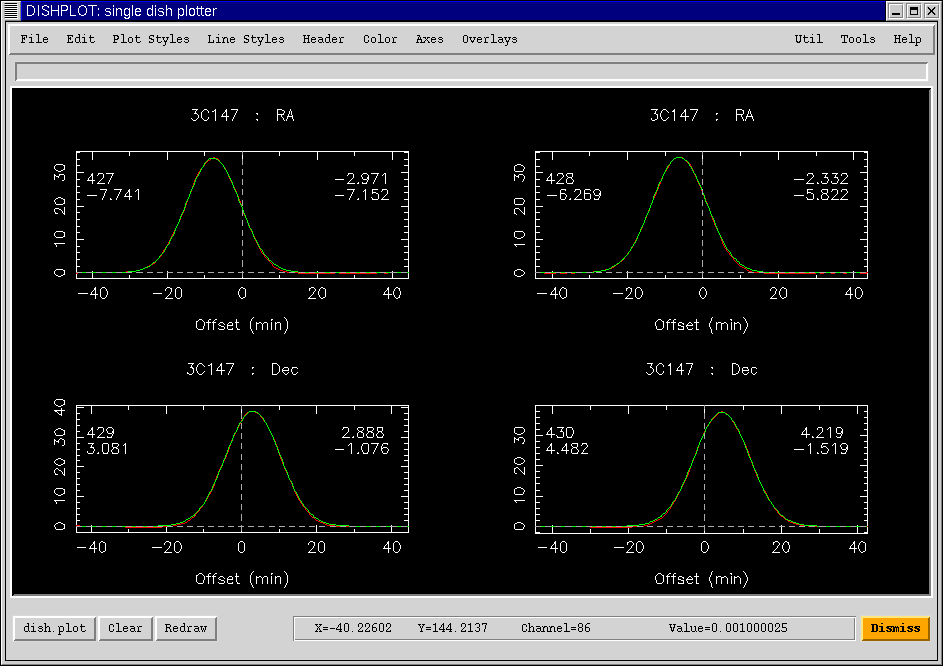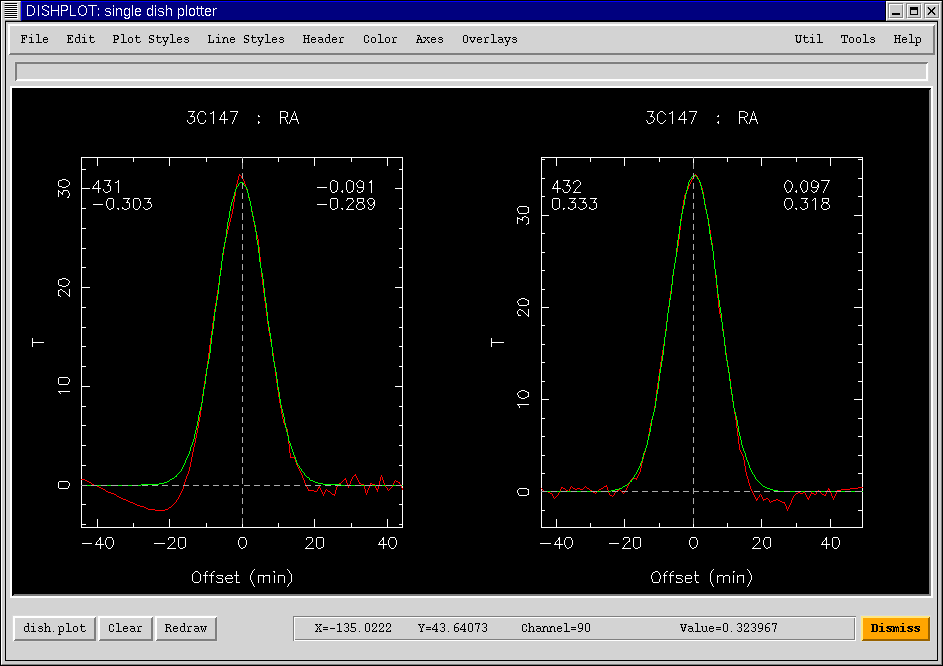
GBT News Update
10 February 2001
This past week has been the first week of astronomical commissioning, and it has gone quite well. Pointing and focusing observations with the 800 MHz Prime Focus Receiver have been done at night while engineering work has proceeded in the daytime. The primary purpose of the observations is to obtain pointing and focus measurements so that a pointing model can be fit and a focus calibration curve established. In addition, the observations allow the staff to perform general debugging of GBT systems. Not surprisingly, a number of problems have been indeed been uncovered, and the debugging process is underway. Pointing and focus observations have been quite successful, nonetheless. A sample pointing measurement is shown in the figures below. The first figure shows the initial RA and DEC cross scans of the pointing source, 3C147. The second figure shows the subsequent RA cross scans after the pointing offset was fit and a correction input to the control computer. In the plots, the red trace is the data and the green trace the fit.
Progress was also made on the laser metrology system this week. A few rangefinders are being used to acquire retroreflectors on the surface and measure the distances to them. This is part of a process leading up to the use of all twelve ground-based rangefinders to range all targets on the GBT understructure and feedarm. The measured distances can then be input into the structural model of the GBT to refine that model. In addition to the rangefinder measurements, progress was made on the preparation for installation of the first of six rangefinders on the feedarm, which will be used to range distances to the GBT surface.
The holography reference horn was also installed at the tip of the feedarm (see the "GBT Picture of the Day" for February 8). This is one component of the holography system that will be used to measure the GBT surface figure. This reference horn looks straight ahead at the satellite beacon and provides the reference data which is correlated with the data from primary beam illuminating the GBT reflector. After processing, a phase map of the surface is produced which will be used for the next round of surface panel adjustments.
As reported last week, segments of the azimuth track base plates were welded together in an attempt to reduce the movement of the track segments relative to the concrete foundation. This initiative was quite successful, reducing the slippage from 0.055 in to 0.003 in. Based on this improvement, a program has been put in place to weld sections of 6 base plate segments together around the track. The second part of the program was to install dowels into the upper wear strip in attempt to stop its movement relative to the base plate. The initial attempt at this has failed. After the dowels were installed, a test was run in which the azimuth wheels were driven over the modified segment. The dowels fractured in several places. A preliminary analysis suggests that the forces on the wear strip were much higher than previously thought. The plan is to measure these forces again next week, and based on the results, redesign and re-install the dowels.
P. R. Jewell
M. M. McKinnon

